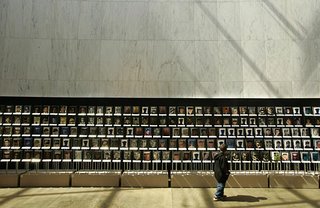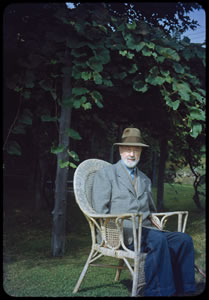In Memorium, Shohei Imamura: Anthropological And Humanist Filmmaker
The film contains most of the seeds of Mr. Imamura's mature work: the black-and-white widescreen frames throb with an animalistic vitality, and his protagonists are unabashedly amoral and self-centered, concerned only with personal survival. For Mr. Imamura, these were the positive traits of an island nation of limited resources. "The Insect Woman" (1963) follows Tome (Sachiko Hidari) from childhood through a successful career as a prostitute and madam. "The Pornographers" (1966), subtitled "An Introduction to Anthropology," satirizes tight Japanese families: an impotent maker of stag movies lusts after his teenage stepdaughter.
With "The Profound Desire of the Gods" (1968) Mr. Imamura turned a tiny island populated by an incestuous family into a corrosive metaphor for Japanese isolationism. An expensive film, it proved to be a box office failure, and for the next several years, he concentrated on a film school he had founded, and on documentaries, still following his favorite themes. This period produced "The History of Postwar Japan as Told by a Bar Hostess" (1970) and "The Making of a Prostitute" (1975).
He returned to fiction filmmaking in 1979 with "Vengeance Is Mine," one of the first films to take a serial killer as a hero. "Eijanaika" ("Why Not?," 1981) remains an epic vision of Japan in the 1860's, as the country reluctantly opened to the West.
After "Eijanaika," Mr. Imamura seemed to cool down and scale back his films. "The Ballad of Narayama" (1983), a remake of a famous 1958 heart-tugger, approached academicism with its classical compositions and attention to period detail: Mr. Imamura was rewarded at Cannes with his first Palme d'Or, the top award. He received the Japanese equivalent of the Oscar, the Kinema Junpo Award, for "Black Rain" (1989), a somber study of Hiroshima.
With his final three features, Mr. Imamura [in collaboration with one of his sons who wrote the screenplays] regained his subversive sense of humor, and his sometimes clinical detachment from his characters turned to a warm, if amused, affection. "The Eel" (1997, the winner of his second Palme d'Or), "Dr. Akagi" (1998) and "Warm Water Under a Red Bridge" (2001) were relatively calm and contemplative.
But Mr. Imamura also found time during this period to sponsor the work of Takashi Miike, whose notoriously violent, overtly sadistic films took Mr. Imamura's assumptions about humanity to new extremes. Mr. Imamura's last work was a short contribution to "September 11," an anthology film about the worldwide effects of the attacks." ...
Dave Kehr "Shohei Imamura, 79, Japanese Filmmaker, Is Dead" New York Times, May 31, 2006
http://www.nytimes.com/2006/05/31/movies/31imamura.html

Still from Shohei Imamura's 1989 masterpiece "Black Rain", based upon the masterpiece "Kuroi Ame" (1965) by Ibuse Masuji.
"When Black Rain appeared, it was generally thought that Ibuse, the elder statesman in the Japanese literature, was on the verge of retirement. On the publication of the work, Ibuse received the Order of Cultural Merit, Japan's highest honor to a writer, and the Noma Prize. Before his death in Tokyo on December 1993, Ibuse produced still several works, including the autobiographical HANSEIKI (1970). Debate over Black Rain has continued after its publication. Among others the Nobel laureate Oe Kenzaburo has seen Ibuse's fiction as an attempt to humanize the inhuman. However, Black Rain has become perhaps the world's best known Japanese novel."
Credits: http://www.conelrad.com/conelrad100/images/blackrain.gif and http://www.kirjasto.sci.fi/ibuse.htm. With thanks.





























